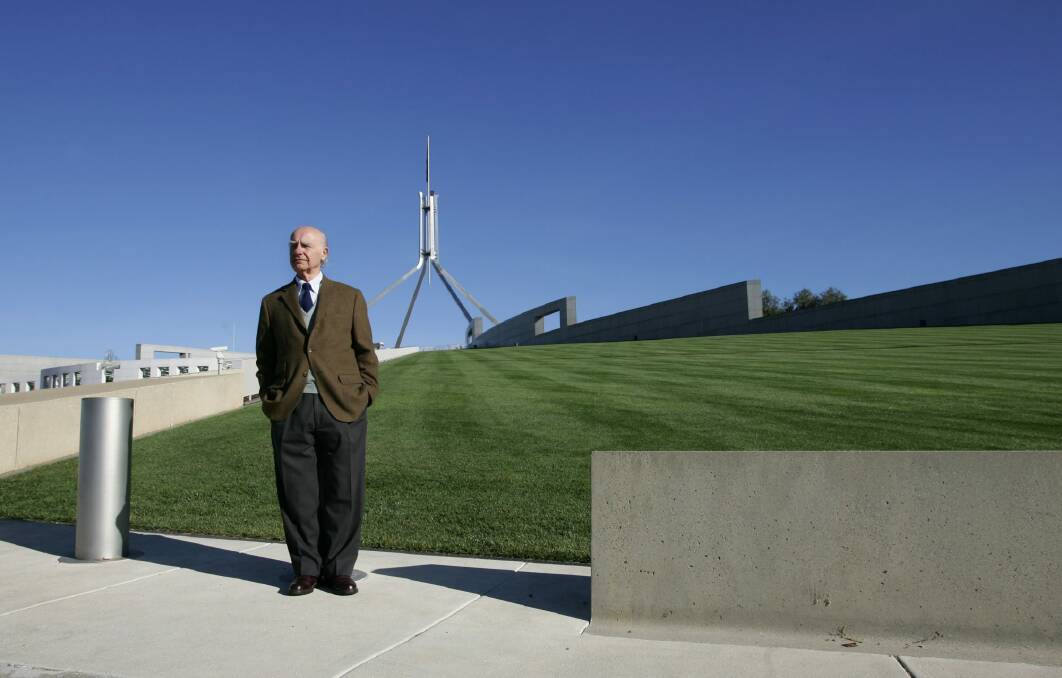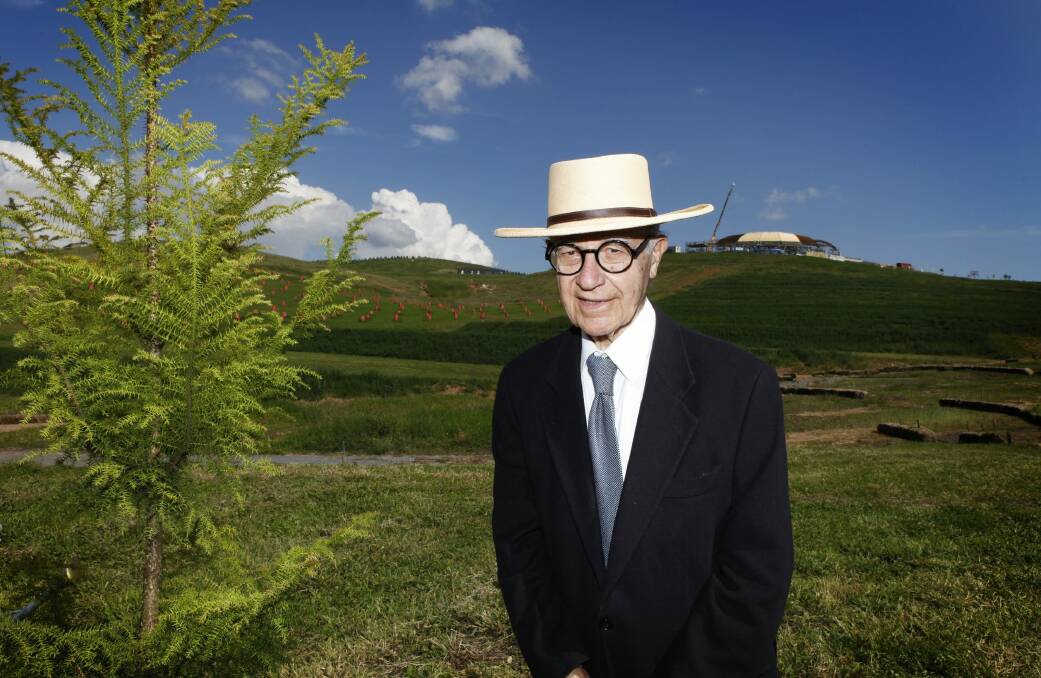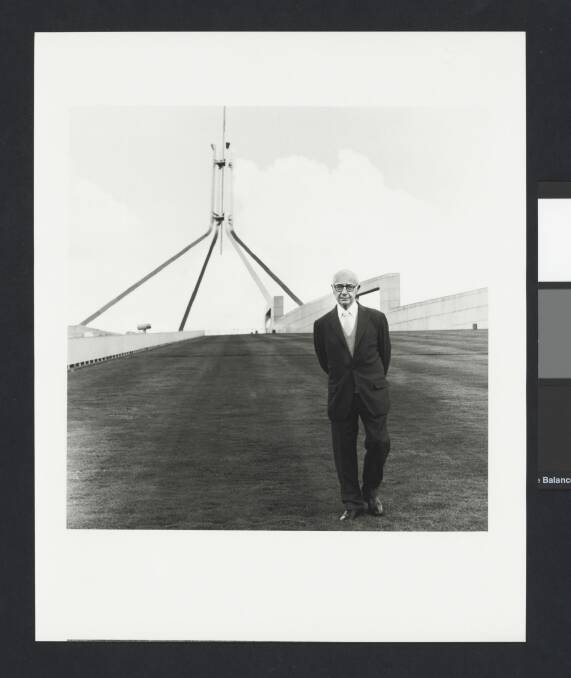The internationally renowned architect who designed Australia's Parliament House, Romaldo Giurgola, has died aged 95.
Subscribe now for unlimited access.
or signup to continue reading
Giurgola won an international competition to design the Commonwealth of Australia's new Parliament House in 1979 with his New York-based firm.

He said Capital Hill's distinctive design was inspired by democracy itself.
"We felt if Australia's new Parliament House was to speak honestly about its purpose, it could not be built on top of the hill as this would symbolise government imposed upon the people," he is quoted as saying.

"The building should nest with the hill, symbolically rise out of the Australian landscape, as true democracy rises from the state of things."
Giurgola was born in Rome in 1920, the son of an artist and stage designer. He discovered Walter Burley Griffin's vision for Canberra as a young man and was impressed with its respect for the local topography.
He gained a degree in architecture from La Sapienza University and worked on Rome's post-war construction before moving to New York aged 27.
He obtained his masters on a scholarship to Columbia University and worked with architect Ehrman Mitchell before moving to Australia to oversee the construction of Parliament House.

The academic and author later settled in Kingston, once telling The Canberra Times he loved the city the moment he saw it.
"Because it is a unique example in the world where nature is still flourishing and is part of the life. Canberra is a unique example in the world. Of course you have examples of cities in the world with trees, but not done consciously the way it was done here … All this is something so precious I will fight for it until my last day," he said.
Canberra architect Hal Guida began his career working for Giurgola in Philadelphia in 1968, followed him to Canberra to work as partner-in-charge of design co-ordination of Parliament House, and continued working with him until Giurgola's retirement several years ago.
He said Giurgola's death had been sudden, but his life was well-lived.
"It's a great loss to architecture in Australia and indeed the world," he said. "Everyone looks forward to having a remembrance and a celebration of his life and contribution to architecture and to the way people live."
President of the ACT chapter of the Australian Institute of Architects, Rob Henry, said Giurgola's death was the end of an era for Canberra architecture.
"He made an incredible contribution to the work of many of our members, most of whom would have worked under or been taught by Aldo," he said.
"I can remember him coming to teach me drawing at the University of Canberra - he was always very dedicated to education, and had an amazing warmth and humility, he was a very humble character."
He said throughout his practice, Giurgola had taken on work of all scales, from small residences, to churches, and to Parliament House.
"But all his work had a human scale. No matter the size, you felt comfortable in his buildings. Everything he did he thought about from a human perspective," he said.
"He's going to be deeply missed by our community, and his legacy is there, not only through his built works but through his influence on other architects."
Giurgola received the RAIA Gold Medal by the Royal Australian Institute of Architects in 1988, and Australian Centenary Medal in 2001.
He was named an Honorary Officer of the Order of Australia in January 1989 and became an Australian citizen in 2000.
His other notable works include the Wright Brothers National Memorial Visitor Centre, the Penn Mutual Tower and the INA Tower in Philadelphia.

